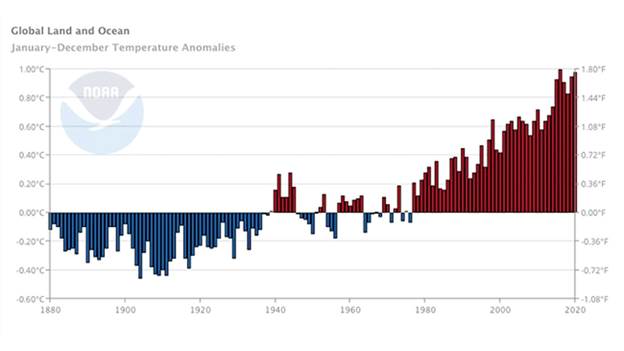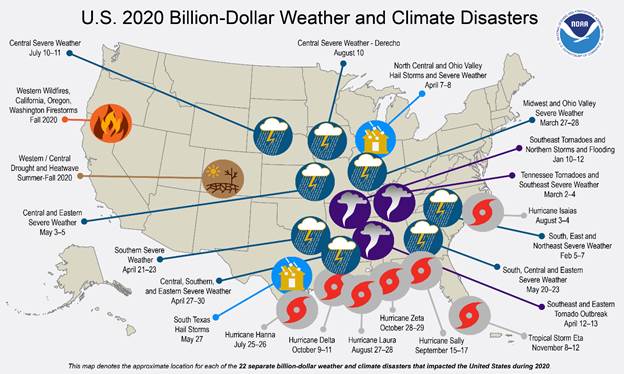But Will It Mark a Turning Point?
2020 was a challenging year by lots of measures – and climate change was no exception. While U.S. carbon dioxide emissions fell to their lowest level in three decades, local and global temperatures continued to rise. If the economic freefall caused by the coronavirus pandemic couldn’t halt the global warming trend, what will?
Before offering practical steps you can take, here’s a review of some grim weather statistics from 2020:
- Globally, 2020 tied 2016 as the warmest year on record (in 141 years of recordkeeping). Now we’re just 0.2 degrees Celsius below the 1.5°C limit set by the Paris climate accord to avoid long-term and possibly irreversible damage to the environment and our global economy.
- The most-rapid warming is occurring in the Arctic region, where temperatures are climbing three times faster than the global average. All snow-covered regions are under stress. Global sea ice, glaciers and ice sheets are melting 57% faster today than they were three decades ago. The polar ice cap could disappear completely in summer months by 2040 – less than two decades from now!
- A record 50 weather events topped $1 billion in damage in 2020, mainly from hurricanes, wildfires, tornadoes and other severe storms. Of these catastrophes, 22 were in the United States, and 20 were east of the Mississippi River. New England avoided any major damage, supporting the thesis that our region is best positioned to withstand the rigors of climate change.

Still, New England has not escaped the warming trend overall. In fact, 2020 was the fourth warmest year on record in New Hampshire, and the fifth warmest year in Vermont. After an especially hot, dry summer, much of eastern New England entered the fall in severe drought conditions. More than 160 community water systems in New Hampshire and another 100 municipalities in Massachusetts had to impose temporary water restrictions.

The hard lesson of 2020 is that one year’s worth of falling greenhouse gas emissions isn’t nearly enough to halt the long-term warming trend. It will require a broad global effort with sustained government support. The Biden administration has hit the ground running by issuing several important executive orders and prioritizing climate change as a top national security issue.
Still, progress on the ground must be measured at the local level. Here in northern New England, we still produce more climate pollution per person than anywhere else in the Northeast. That’s because, as a group, we drive more miles in bigger fossil-fueled vehicles, and we burn more oil and natural gas in our homes during long winter months. Therefore:
The fastest way for us to shrink our region’s carbon footprint is to switch to electric vehicles and energy-saving home heat pumps — powered by backyard solar systems or other forms of renewable electricity.
Our efforts will need to be joined globally, community by community, to push carbon dioxide emissions into permanent decline. Toward that end, the International Energy Agency is about to release a detailed blueprint on how to end reliance on fossil fuels and achieve net-zero carbon emissions by 2050.
“Nothing short of a total transformation of our energy infrastructure will be required. That calls for decisive action this year, next year and indeed every year to 2050.”
IEA executive director Fatih Birol
It’s time to get on board with a non-carbon, all-electric future. Solaflect Energy is your home energy management partner to help you install clean and affordable solar electricity and home battery systems. The power is in our hands to make a difference!
To learn more, Contact Us.




